Introduction: Cult Programming and Its Goals
Cult programming is a process in the course of which “individuals are subjected to potent mind-control techniques (disguised as spiritual, community-building, psychotherapeutic training) that rapidly undermine their capacity for rational, autonomous decision-making” (Bromley, 1998, p. 42).
Goals:
- to train people to be:
- strong;
- loyal;
- silent;
- to make people perform group jobs;
- to carry out spiritual training (Hunter, 1998).
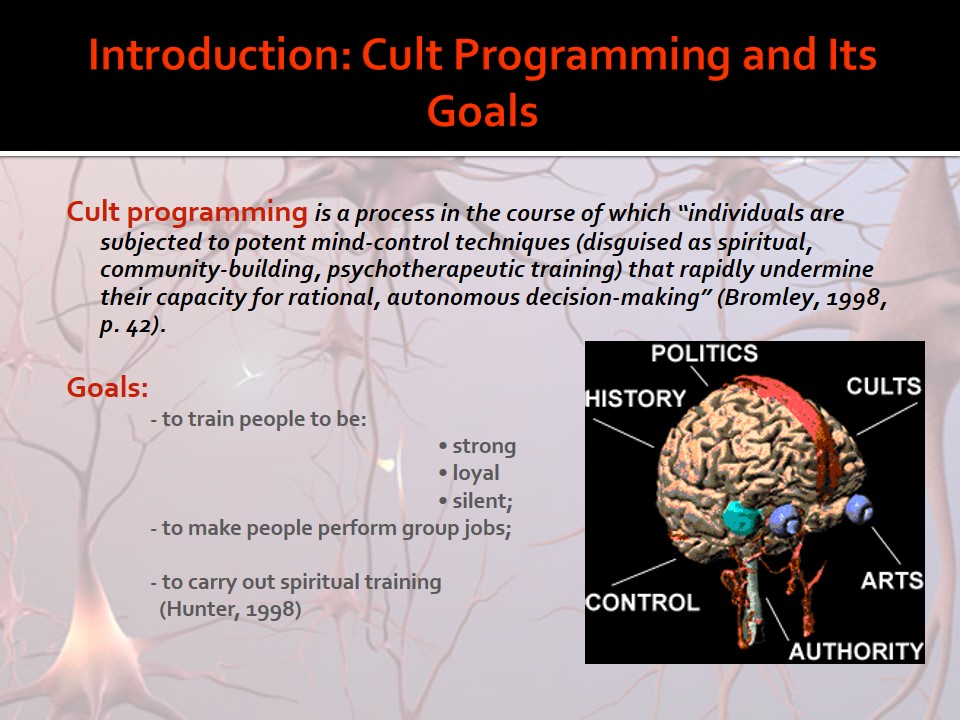
History of Deprogramming
Theodore Roosevelt Patrick, Jr. (born 1930) was a proponent of deprogramming. Patrick did not have any special education or training, though this did not inhibit his practice of deprogramming the members of religious cults (‘The Children of God’ was one of the most widespread in those times). Patrick initiated this practice in 1971 in an attempt to help his own son who had got under the influence of a religious cult (Gallagher and Ashcraft, 2006).
The essence of his deprogramming activities consisted in kidnapping people who were reported by their relatives to have been programmed by religious cults. It was namely for the kidnapping activities that Patrick stood in trial for several times (Lewis, 2009). This, however, did not make Patrick stop employing his practice, though he started avoiding to carry out the actual kidnapping focusing more on deprogramming as such. His major technique consisted in convincing the subject to stop meditating or praying, namely which, as he believed, made the subject unable to evaluate the situation he/she was in.
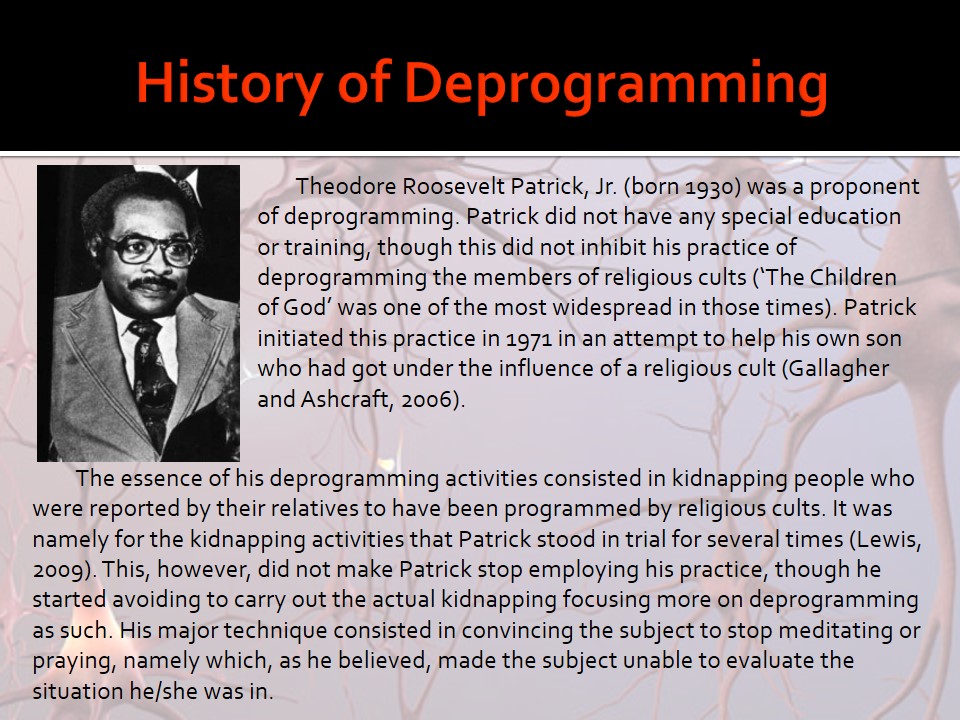
Deprogramming: What Is It?
Deprogramming is “a set of techniques for removing persons from new religious groups and involving them in a rigorous and even coercive resocialization process in an attempt to get them renounce their beliefs and accepts more traditional ones” (Frank & Frank, 1993, p. 84).
Why Should Deprogramming be Carried out?
The matter is that the recruits may not be aware of a number of things about the group that they have joined, such as:
- true identity of the group;
- the fact that they are expected to devote their entire life to the group;
- the fact that the group might leave itself the right to choose marriage partners and entirely control the lives of its members (Craighead & Nemeroff, 2004).
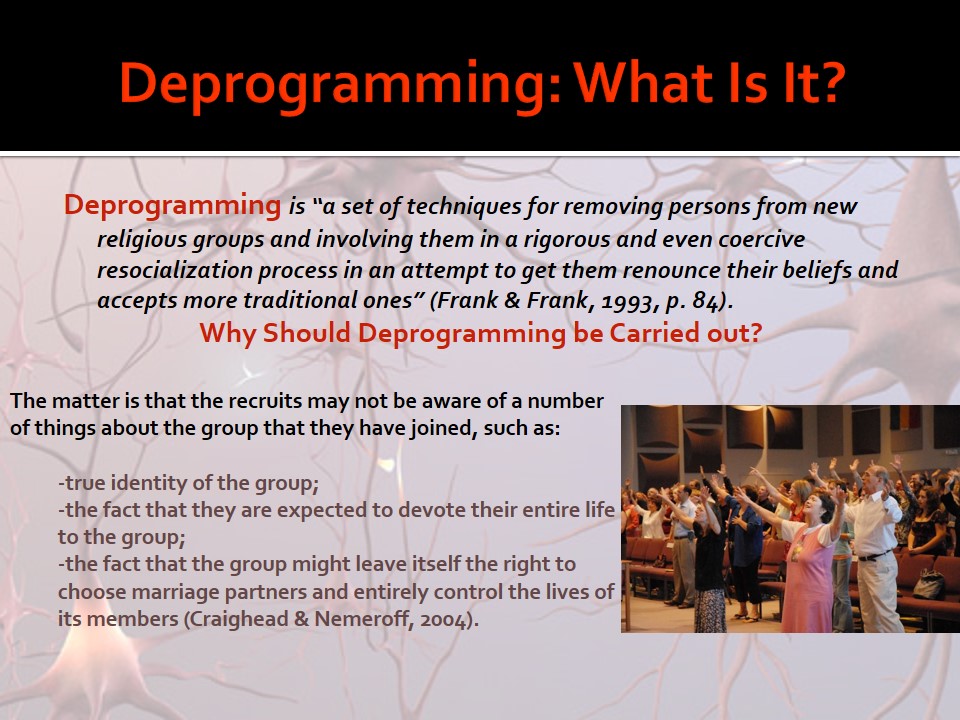
Deprogramming Cult members: Main procedures
In the 1970s a number of anti-cult organizations, as well as separate deprogrammers (some of who were former cult members) have emerged (Wilson & Cresswell, 1999). They have employed a number of procedures to carry out the process of deprogramming. Some of the most effective were:
- Removal of the subjects from the cult environment and isolating them;
- Proving to the cult members with the help of evidence (newspaper articles, video tapes) that the organization that they is involved in is a cult;
- Convincing the subjects that they joined the group against their will;
- Discrediting the cult leader;
- Explaining to the subjects the contradictions existing within the cult’s ideologies (Spilka, 2003).
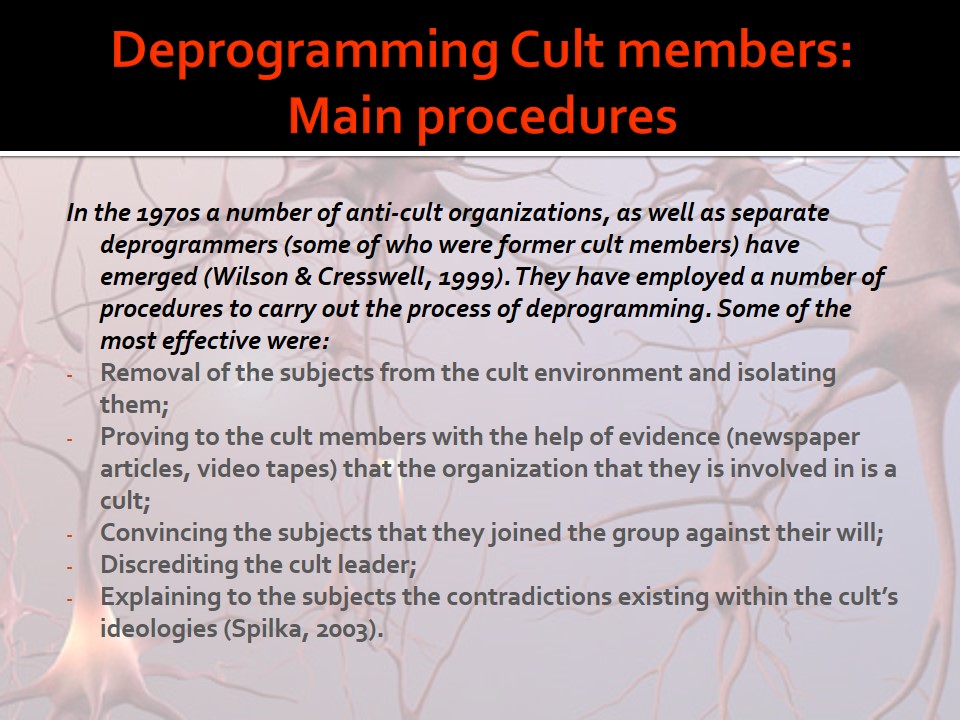
A Word for Psychology Memes: Viral Mind-Hijacking
Above all, deprogramming is aimed at diverting the process of the religious ideology capturing the mind of a person. But how does this take place?
The essence of programming is invasion into the subject’s belief system and dominating over it. This takes place with the help of the memes, the so-called forms of mind virus that are used intentionally to dominate over a person’s system of learned beliefs (Sheehan, 2006).
It is namely the concept of meme that makes it possible to understand how different cultural artifacts infect human thoughts(Stanovich, 2005). The matter is that memes make it easier for a person to achieve cognitive distancing (Nooteboom, 2009).
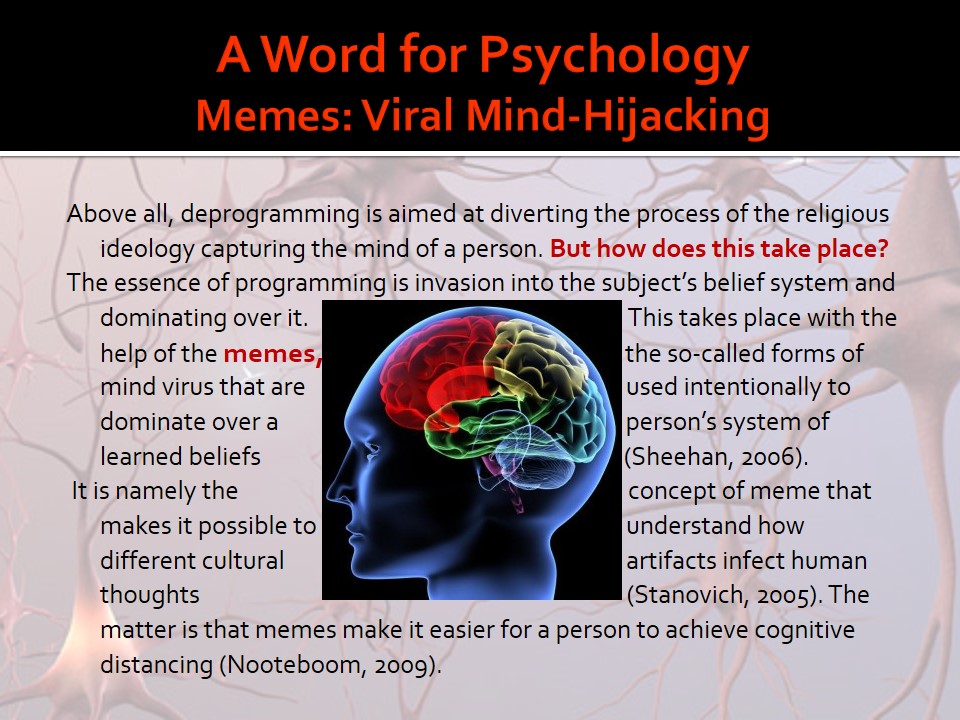
Memetic Lexicon: Memes, Membots, Memeoids…
Memes are exo-toxic to hosts, the ones who have been infected by them, but they are even more dangerous for other people, especially those who are infected by rival memes (this results in the collision of two opposite ideologies/religions, etc and the rival memes destruct the hosts of one another). The last to mention is that, when a host is infected by a meme and starts propagating it to others, he/she becomes a membot (such as, for instance, many Jehovah’s Witnesses): “Due to internal competition, the most vocal and extreme membots tend to rise to top of their stereotype’s hyerarchy. A self-destructive membot is a memeoid” (Bright, 2009).
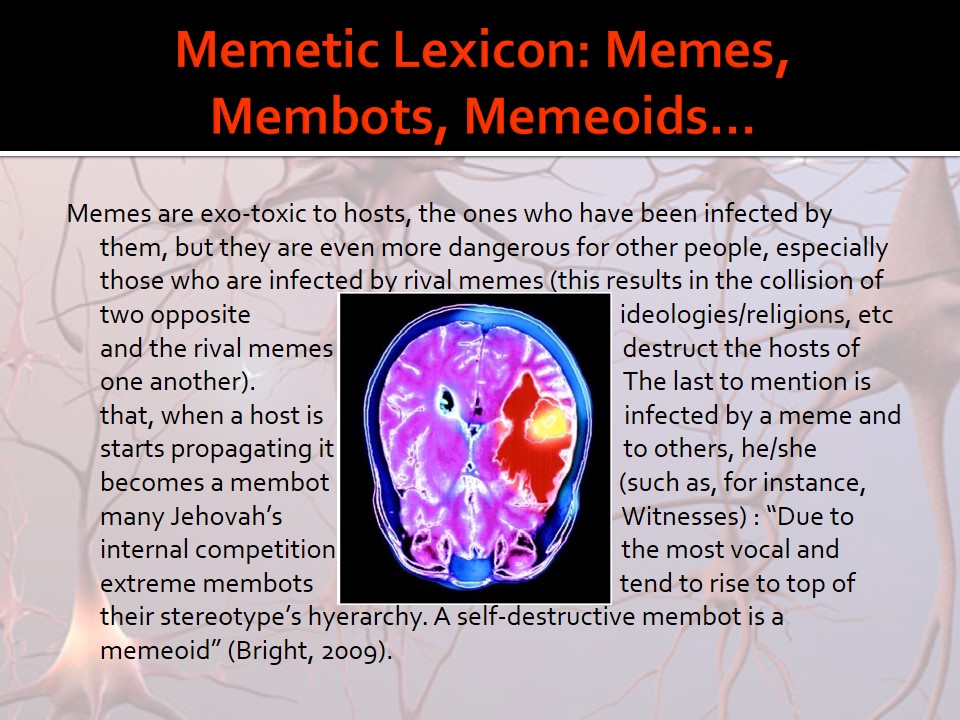
Reference List
Bright, E. (2009). Religovirology: Meme mechanics, virology of religion, and refutation of supernaturalism. New York: iUniverse.
Bromley, D.G. (1998). The politics of religious apostasy: the role of apostates in the transformation of religious movements. New York: Greenwood Publishing Group.
Craighead, W.E. & Nemeroff, C.B. (2004). The concise Corsini encyclopedia of psychology and behavioral science. New York: John Wiley and Sons.
Frank, J.D. & Frank, J.B. (1993). Persuasion and healing: a comparative study of psychotherapy. Baltimore: JHU Press.
Gallahger, E.V. & Ashcraft, W.M. (2006) Introduction to new and alternative religions in America: Metaphysical, New Age, and neopagan movements. New York: Greenwood Publishing Group.
Hunter, C.R. (1998). Master the power of self-hypnosis: program your subconscious to attain health, wealth & happiness. Toronto: Sterling Publishing Company, Inc..
Lewis, J.R. (2009). Scientology. Oxford: Oxford University Press US.
Nooteboom, B. (2009). A cognitive theory of the firm: learning, governance and dynamic capabilities. Northampton: Edward Elgar Publishing.
Sheehan, E.L. (2006). The mocking memes: a basis for automated intelligence. Bloomington: AuthorHouse.
Spilka, B. (2003). The psychology of religion: An empirical approach. New York: Guilford Press.
Stanovich, K.E. (2005). The robot’s rebellion: finding meaning in the age of darwin. Chicago: University of Chicago Press.
Wilson, B.R. & Cresswell, J. New religious movements: challenge and response. New York: Routledge.